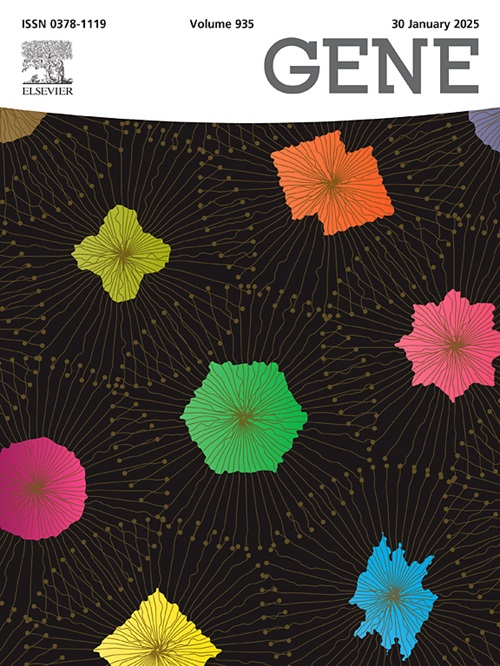Cloning, biochemical identification and characterization of purine nucleoside N-ribohydrolase in Levilactobacillus brevis
IF 2.4
3区 生物学
Q2 GENETICS & HEREDITY
引用次数: 0
Abstract
Purine nucleoside N-ribohydrolase (PNase) plays a crucial role in purine metabolism and possibly in hyperuricemia management by degrading purine nucleosides. However, the genetic basis of the enzyme activity in lactic acid bacteria (LAB) remains largely unexplored. This study aimed to clone and express four putative PNase genes from Levilactobacillus brevis LABC170, and to identify the gene(s) responsible for degrading adenosine, guanosine, and inosine. Furthermore, we studied optimal reaction conditions and enzyme kinetics. The four putative PNase genes were cloned, and enzymatic activity was evaluated by high-performance liquid chromatography (HPLC). The optimal pH and temperature were determined, and kinetic parameters were analyzed. Among the candidates, the recombinant PNase 3 gene product exhibited purine nucleosidase activity with optimal activity at pH 7 and temperatures between 35 and 40 °C, while it failed to degrade pyrimidine nucleosides. Kinetic analysis showed the turnover number for adenosine, with a Kcat of 2.18 × 103 ± 2.29 × 102 min−1 and a catalytic efficiency of 2.79 × 104 ± 2.94 × 103 mM−1·min−1, followed by guanosine and inosine. PNase 3 from L. brevis LABC170 demonstrates promising potential for hyperuricemia management and application in functional foods aimed at modulating purine metabolism.
短乳杆菌嘌呤核苷n -核糖水解酶的克隆、生化鉴定及特性研究。
嘌呤核苷n -核糖水解酶(PNase)在嘌呤代谢中起着至关重要的作用,并可能通过降解嘌呤核苷来管理高尿酸血症。然而,乳酸菌(LAB)酶活性的遗传基础在很大程度上仍未被探索。本研究旨在克隆和表达短叶乳酸杆菌labc170中4个推测的PNase基因,并鉴定降解腺苷、鸟苷和肌苷的基因。此外,我们还研究了最佳反应条件和酶动力学。克隆了4个推测的PNase基因,并利用高效液相色谱法对其酶活性进行了评价。确定了最佳pH和温度,并对动力学参数进行了分析。其中,重组PNase 3基因产物在pH为7、温度为35 ~ 40 °C时表现出嘌呤核苷酶活性,而不能降解嘧啶核苷。动力学分析显示腺苷酸的转化率,Kcat 2.18 ×103 ±2.29 × 102最低为1和催化效率2.79 ×104 ±2.94 × 103 mm - 1·最低为1,其次是鸟嘌呤核苷和肌苷。PNase 3 from ml。brevisLABC170在调节嘌呤代谢的功能食品中具有良好的高尿酸血症管理和应用潜力。
本文章由计算机程序翻译,如有差异,请以英文原文为准。
求助全文
约1分钟内获得全文
求助全文
来源期刊

Gene
生物-遗传学
CiteScore
6.10
自引率
2.90%
发文量
718
审稿时长
42 days
期刊介绍:
Gene publishes papers that focus on the regulation, expression, function and evolution of genes in all biological contexts, including all prokaryotic and eukaryotic organisms, as well as viruses.
 求助内容:
求助内容: 应助结果提醒方式:
应助结果提醒方式:


